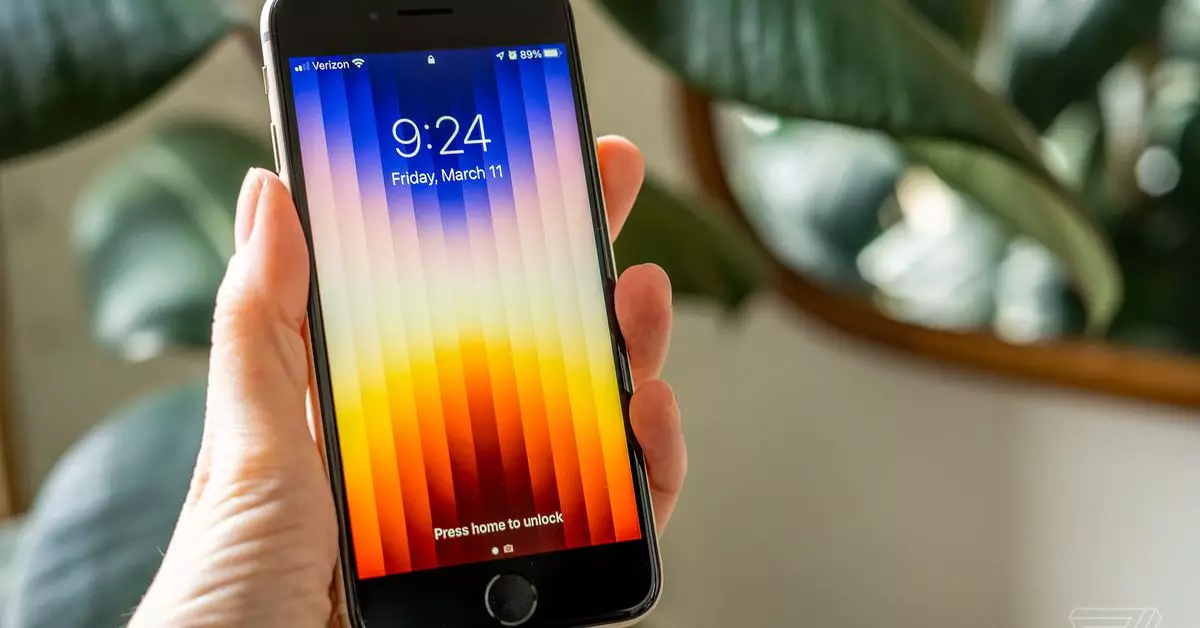Consumer technology has always thrived on competition, and the smartphone market is no different. As enthusiasts debate the merits of Apple’s iOS versus Google’s Android, one striking observation stands out: Apple appears to lag in the midrange smartphone segment. This gap presents not only a challenge for the company but also an opportunity to redefine its approach to budget-conscious consumers. While Apple continues to dominate the high-end market with premium devices, the midtier segment remains a realm where Android excels, offering a diverse portfolio of options that appeal to various users.
Apple’s iPhone SE lineup has long been regarded as its “affordable” series. However, the latest iteration leaves much to be desired. The third-generation SE, which made its debut in 2022, is available starting at $429. Despite a solid build quality, decent water, and dust resistance, and wireless charging capabilities, it seems increasingly outdated. The iPhone SE features a small LCD display that feels cramped by contemporary standards, especially when juxtaposed with the vibrant OLED screens found in many midrange Android devices.
Moreover, while Apple touts the SE’s camera, it falters significantly in low-light conditions—a major shortcoming in today’s smartphone photography landscape. As the Android ecosystem continues to innovate with models such as the Google Pixel 8A, which offers a superior OLED screen and a significantly improved camera for a similar price, the SE appears even more lackluster.
In contrast to Apple’s underwhelming offerings, Android has gained considerable traction in the midrange category. The Pixel 8A exemplifies everything a consumer could want in this segment, boasting an IP67 rating, impressive camera capabilities, and a modern design—all for $499. Brands like Samsung have also invested in midrange devices like the Galaxy A35, providing consumers with competitive features and contemporary aesthetics at a price point that doesn’t break the bank.
This shift toward higher-quality Android midrange phones raises critical questions about Apple’s positioning in a market increasingly captivated by value. Can the iPhone SE maintain relevance when it lacks essential features such as modern display technology and adequate storage at the entry level?
Despite the current shortcomings, there is hope for the next generation of the iPhone SE, which might launch in 2025. Emerging rumors indicate that Apple might revamp the SE with an OLED display, a more modern design, and potentially larger base storage options. Such enhancements would target the specific complaints consumers have voiced about the existing model.
While a price increase to $499 seems plausible, the perception of value might shift dramatically with appropriate upgrades. A well-executed refresh could rekindle interest in the SE series and satisfy a market hungry for affordable yet capable smartphones.
Apple’s restrictive pricing strategy reflects the commonly held belief that premium devices are synonymous with superior quality. However, the growing average selling price of iPhones—with reports indicating figures upwards of $1,018—highlights a disconnect between the brand and a significant segment of consumers. Many users are left contemplating the realities of midrange financial flexibility, especially when carrier subsidies and financing often sway them toward more expensive models.
There is a burgeoning subset of smartphone buyers who simply want an effective, no-frills device. By addressing the essential features without overcomplicating the SE’s design, Apple could carve out a profitable niche in the market.
Drawing inspiration from Apple’s other product lines can reveal significant lessons. The recent Mac Mini release, which successfully distills the essential elements of a modern desktop experience, offers a roadmap for reimagining the SE. This no-frills approach—with the right balance of performance and price—enables Apple to appeal to budget-conscious consumers while maintaining brand integrity.
Apple’s past relationship with its user base suggests that if the SE mirrors the practicality of the new Mac Mini—eliminating excess and focusing on user experience—it could emerge as a formidable player in the midrange market.
As we approach the anticipated launch of a revamped iPhone SE, the stakes for Apple couldn’t be higher. The contrast with Android’s expanding midrange offerings underscores a need for innovation and adaptability within Apple. A well-considered redesign could resuscitate the iPhone SE line, not only capturing the interest of cost-conscious consumers but also reaffirming Apple’s commitment to accessible technology. The future of the SE may indeed be bright—if Apple can seize the moment and deliver a device that meets the evolving needs of the smartphone market.


Leave a Reply